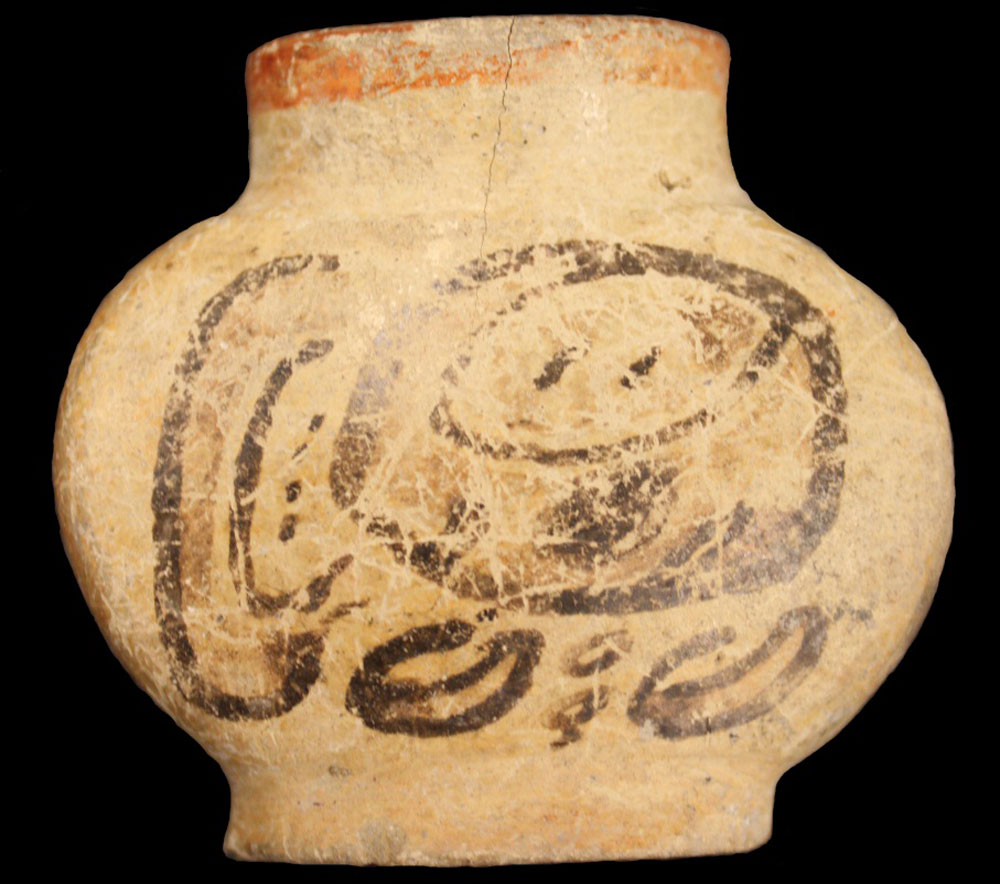Found: First Solid Evidence of Ancient Mayans' Tobacco Use

Traces of nicotine discovered in a Mayan flask dating back more than 1,000 years represent the first physical evidence of tobacco use by the Mayans, researchers say.
The flask was decorated with text that seemed to read "Yo-'OTOT-ti 'u-MAY," which translates to "the home of his tobacco" (or "her tobacco" or "its tobacco"), the archaeologists said, but that by itself wasn't enough to convince them.
"Textual evidence written on pottery is often an indicator of contents or of an intended purpose – however, actual usage of a container could be altered or falsely represented," said study researcher Jennifer Loughmiller-Newman of the University at Albany.
Their analysis of the samples extracted from the flask identified nicotine, the signature alkaloid in tobacco, as a major component. That indicated the vessel was likely used to hold tobacco leaves, the researchers wrote in the study.
The flask was dated to around A.D. 700 during the Late Classic Maya period, which lasted from A.D. 600 to 900. The archaeologists determined that it was made in southern Campeche, Mexico.
It is one of 150 vessels in the Kislak collection of the Library of Congress. Although many of the Mayan flasks in the collection were filled with other substances over time — such as iron oxide, which was used in burial rituals — the researchers were able to detect the container's original content using high-tech chemical-analysis equipment, such as a mass spectrometer.
"Our study provides rare evidence of the intended use of an ancient container," study researcher Dmitri Zagorevski of Rensselaer Polytechnic Institute said in a statement. "Mass spectrometry has proven to be an invaluable method of analysis of organic residues in archaeological artifacts."
Get the world’s most fascinating discoveries delivered straight to your inbox.
The finding marked the second time the hieroglyphics on a Mayan container indicated its intended use. The first example was a vessel whose text and chemical analysis of its contents pointed to theobromine, an alkaloid found in cacao.
"Results such as this are extraordinarily useful in the study of ancient traditions and consumption practices, as well as understanding and interpreting Mayan hieroglyphs," the researchers wrote online in January in the journal Rapid Communications in Mass Spectrometry.
You can follow LiveScience writer Remy Melina on Twitter @remymelina. Follow LiveScience for the latest in science news and discoveries on Twitter @livescience and on Facebook.


